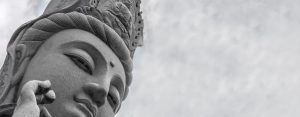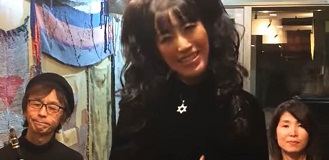Introduction If we pray to Kwan Seum Bosal to remove our “karmic obstructions” (as discussed in the previous section), well, what if it actually works? Once these karmic obstructions are removed, or at least reduced, what is it that we are now able to do. That is, what was, but now is not, being obstructed? […]
Category: chanting
Kwan Seum Bosal Chanting Part Three: Eliminating Karmic Obstacles
Introduction So, let’s talk about bad karma. Bodhidharma (the founding teacher of Zen in China) taught that When those who search for the Path encounter adversity, they should think to themselves, “In countless ages gone by, I’ve turned from the essential to the trivial and wandered through all manner of existence, often angry without cause […]
Kwan Seum Bosal Chanting Part Two: Reciting the Name of the Bodhisattva
Introduction As the name implies, the core of “Kwan Seum Bosal Chanting” is the actual chanting of the name of the Bodhisattva of Compassion (Kwan Seum Bosal) over and over again. As a general rule, “Kwan Seum Bosal” should be repeated at least 108 times. The practice of reciting the names of various Buddhas and […]
Kwan Seum Bosal Chanting Part One: Homage / Prostrations
NOTE: This is the first of several posts on Kwan Seum Bosal Chanting. Links to all the other posts are at the bottom of this post (in the section on “Sources and Resources”) Introduction Kwanseum Bosal Chanting is a practice that comes from the Korean Buddhist tradition. I don’t know of any closely similar practices […]
The Heart Sutra Mantra
揭諦 揭諦 波羅 揭諦 波羅僧 揭諦 菩提 娑婆訶 a-je a-je ba-ra-a-je ba-ra-sung-a-je mo-ji […]
Mantra For Correcting Mistakes and Omissions (補闕真言)
There is a much shorter mantra in the Korean tradition with the same title. But this video is of a different, longer version used today in China. It is a really lovely video in which a mother is teaching the mantra to her daughter. 補闕真言 南無喝囉怛那,哆囉夜耶。 佉囉佉囉。俱住俱住。 摩囉摩囉。虎囉,吽。賀賀, 蘇怛拏,吽。潑抹拏,娑婆訶。 nā mó hē là dá nà […]
大悲咒 (Great Compassionate Mantra)
大悲咒 (Great Compassionate Mantra). This is one of the most popular mantras among present-day Buddhists. It is not to be confused with the longer mantra that is also often referred to as 大悲咒, and in English is often simply called “The Great Dharani”. That longer mantra is also known as “The Nilakantha Dharani”, but the […]
“Do not pass your days and nights in vain.”
In Chinese, the two character combination 光陰 (guāng-yīn) literally means “light-dark”. But the intended sense is like that in the English phrase “day in, day out”. Or even like that in the song “Sunrise, Sunset”. This phrase occurs in the ancient poem called “The Harmony of Difference and Sameness” (aka The Sandokai), in the line: […]
The Four Great Vows (四弘誓願)
The teachings are infinite; we vow to learn them all.
法門無量誓願學
法門 Pinyin: fǎ-mén. Meaning (literal): Dharma gate. Composition: 法 + 門 (“Dharma” + “gate”)
無量 Pinyin: wú-liàng. Meaning: immeasurable. Composition: 無量 (“no” + “measure”)
學 Pinyin: xué. Meaning: learn
五 蘊 皆 空 (five skandhas all empty)
In this post I’ll do the last four characters of the third line of the Heart Sutra. But perhaps before going any further I should point out that there is no standardization (at least none that I am aware of and/or comply with) for numbering the “lines” of the Heart Sutra. So these “lines” of […]





